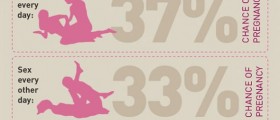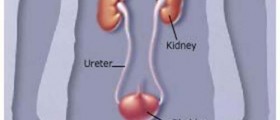
Absence of a regular menstrual cycle is also known as amenorrhea, and a woman suffering from this condition may miss one or several cycles. Doctors differentiate two types of amenorrhea, primary and secondary. When a woman hasn’t had a menstrual period by the age of 16 the medical term to describe this condition is primary amenorrhea. Secondary amenorrhea means that the period(s) you had regularly has stopped for some reason.
Most people, especially women, think that pregnancy is the only reason that could explain the absence of menstrual period, but it’s not like that. Pregnancy is only one of the possible explanations, if the woman is sexually active. However, many other factors may attribute to amenorrhea, whether primary or secondary.
Causes of Primary Amenorrhea
About 1% of American girls (older than 16 years of age) haven’t experienced menstrual cycle. The problem may appear in adolescent girls who lack female reproductive organs. Fetal development problems in these girls may lead to absence of some of the important organs of the reproductive system, such as vagina, cervix or uterus, leading to primary amenorrhea.
Structural problems of the vagina may cause existing monthly bleeding invisible. Some girls may have a membrane or a wall in their vagina, preventing the blood out of cervix or uterus.
Chromosomal abnormalities are another potential problem leading to primary amenorrhea.
Hypothalamus and pituitary gland problems can also cause this medical problem in young girls. If the hypothalamus is not working properly a woman will miss her period. Problems with hypothalamus may be caused by eating disorders, physical and psychological stress or a tumor. Tumor of the pituitary brain is also known to cause lack of menstrual cycles.
What Provokes Secondary Amenorrhea
This type of amenorrhea may also be caused by some normal or pathological processes in the body.
As already said, in sexually active women pregnancy can cause lack of menstrual cycle. However, if you are underweight, exercise too much, experience some intense stress in everyday life or start breastfeeding your child you can also suffer from secondary amenorrhea.
Other factors that may provoke this condition may include the use of certain medications, such as contraceptive pills, chemotherapy drugs, oral corticosteroids, anti-depressive or anti-psychotic drugs.
Polycystic ovary syndrome (PCOS) or uterine scarring (also called Asherman’s syndrome) might also be responsible for amenorrhea. Thyroid problems and pituitary tumor symptoms are also associated with the absence of menstrual cycles. Menopause is also well known as primary ovarian deficiency, and some women may experience first signs (including amenorrhea) even in their 40s.

















Your thoughts on this
Loading...